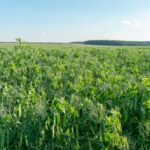A healthy garden or farm begins with the soil, and one of the most effective tools for optimizing soil structure is a tiller. This piece of equipment is invaluable for breaking up compacted soil, incorporating organic matter, and creating an environment where plants can thrive. Here’s how a tiller can transform your soil and enhance plant growth.
1. Breaking Up Compacted Soil
Compacted soil is one of the primary obstacles to healthy plant growth. When soil particles are tightly packed, air and water cannot penetrate, making it difficult for roots to spread. A tiller helps by loosening the soil, breaking up the dense layers, and improving its porosity. This creates space for water and air to circulate freely, essential for root development and nutrient absorption.
2. Incorporating Organic Matter
Adding organic matter, such as compost or manure, is key to enriching the soil. A tiller mixes these materials evenly into the soil, ensuring nutrients are distributed throughout the planting area. This process also encourages microbial activity, which is vital for breaking down organic matter into forms that plants can readily absorb.
3. Enhancing Drainage and Moisture Retention
Soil that is too compacted or uneven often leads to poor drainage or waterlogging, which can harm plants. Conversely, sandy soils may drain too quickly, leaving plants dry. A tiller helps create a balanced structure by breaking up clumps and allowing water to permeate evenly. This balance ensures proper drainage while improving the soil’s ability to retain moisture during dry periods.
4. Reducing Weeds and Pests
Using a tiller can also help manage weeds and soil-dwelling pests. By turning the soil, the tiller uproots weeds and exposes pests like grubs to predators and sunlight, reducing their populations. This minimizes competition for nutrients and reduces the need for chemical treatments.
5. Preparing the Soil for Planting
A smooth, aerated seedbed is essential for planting. A tiller breaks up large clods of soil and levels the surface, making it easier to plant seeds or transplant seedlings. The uniform soil texture also ensures even germination and growth, as seeds have consistent access to nutrients, water, and sunlight.
6. Improving Soil Aeration
Roots need oxygen to grow and function effectively. Compact soil restricts oxygen flow, but a tiller introduces air into the soil by turning it over. This increased aeration supports root respiration, enhancing plant growth and overall health.
Choosing the Right Tiller
Selecting the right tiller depends on your needs and soil type. For small gardens or light tasks, a cultivator or mini-tiller may suffice. For larger spaces or heavy clay soils, a rear-tine or front-tine tiller offers the power necessary to handle tough jobs.
Tips for Effective Tilling
- Avoid tilling when the soil is too wet, as this can cause clumping and damage soil structure.
- Incorporate compost or organic matter while tilling for maximum benefit.
- Till at the start of the planting season to prepare the soil and again in the fall to incorporate cover crops or other organic materials.
A tiller is more than just a tool; it’s an investment in your garden’s success. By improving soil structure, enhancing nutrient availability, and creating the ideal environment for plants to thrive, a tiller can make a significant difference in your gardening or farming endeavors. With healthier soil, your plants will be better equipped to grow, flourish, and yield an abundant harvest.
Join 'Farmers Mag' WhatsApp Channel
Get the latest Farming news and tips delivered straight to your WhatsApp
CLICK HERE TO JOIN






